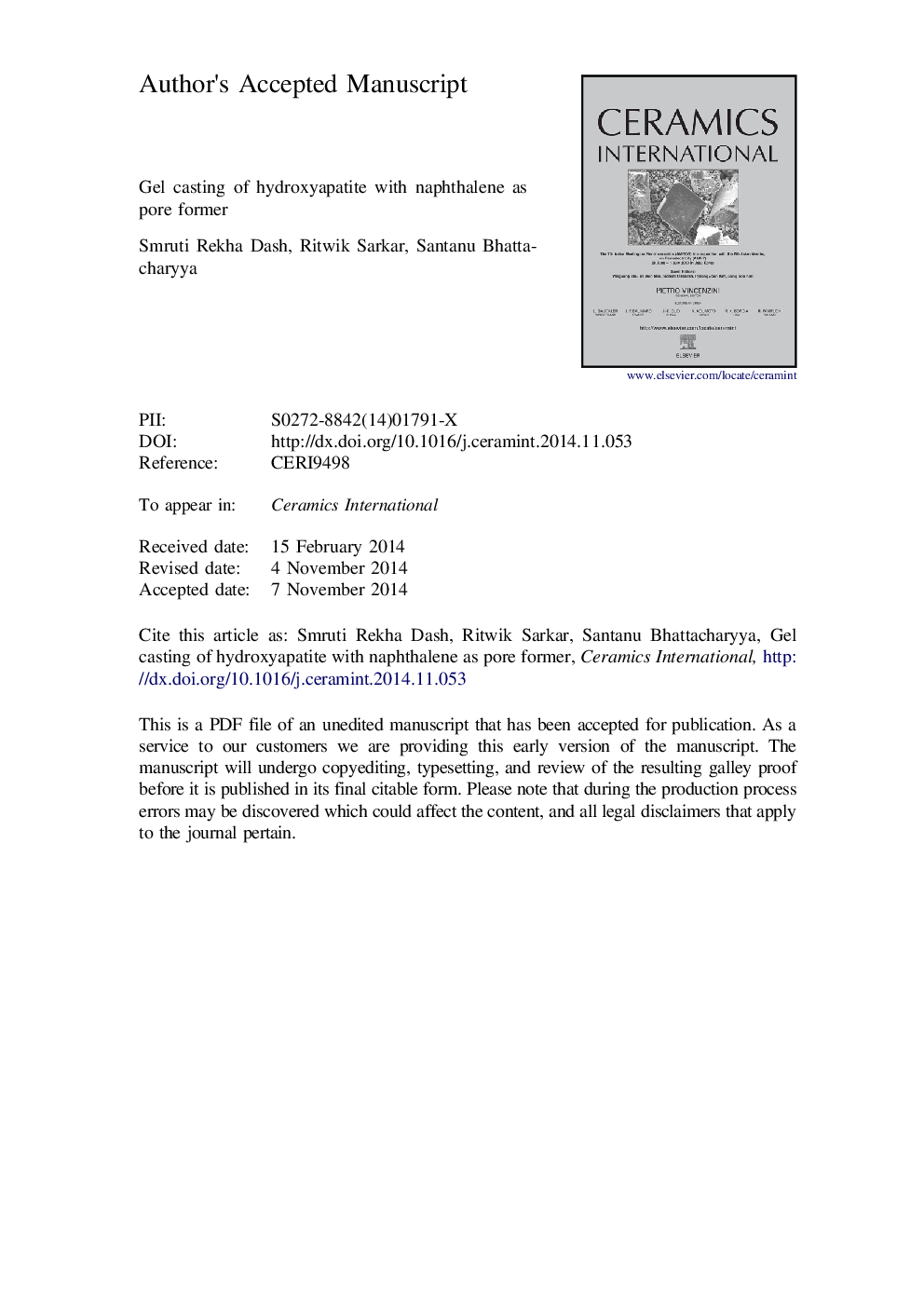| Article ID | Journal | Published Year | Pages | File Type |
|---|---|---|---|---|
| 10624753 | Ceramics International | 2015 | 54 Pages |
Abstract
The present study discusses the processing and characterization of HA scaffolds which have been processed through a combination of gel casting and fugitive addition. The additional use of Napthalene (NA) as fugitive in the gel casting process provides an additional parameter for tailoring the porosity over and above that obtained through gel casting route. The motive behind the use of combination process was to prepare a porous hydroxyapatite (HA) scaffold with wide porosity range along with sufficient mechanical strength. In house prepared HA powder was used as the staring powder and Methyl acrylamide - N,Nâ²-Methylene-bis-acrylamide (MAM-MBM) system was used for gel casting. Varying amount of Naphthalene (10-40Â vol%) and HA solid loading (27-54Â vol%) were used for scaffold preparation. The maximum solid loading that could be casted was 48Â vol%. The sintered porous Hydroxyapatite-Naphthalene (HA-NA) scaffolds had been characterized for phase stability, microstructure, pore size and pore morphology. The highest compressive strength was 7.51Â MPa recorded for 22% porosity samples, and it was 0.75Â MPa for 81% porosity samples. Scaffolds prepared with lower solid loading had good pore interconnectivity. In vitro bioactivity study of the scaffolds showed dissolution of scaffold up to 3 weeks in SBF solution followed by deposition of calcium phosphate as apatite layer. MTT assay results showed acceptable limit of cell growth and proliferation.
Related Topics
Physical Sciences and Engineering
Materials Science
Ceramics and Composites
Authors
Smruti Rekha Dash, Ritwik Sarkar, Santanu Bhattacharyya,
